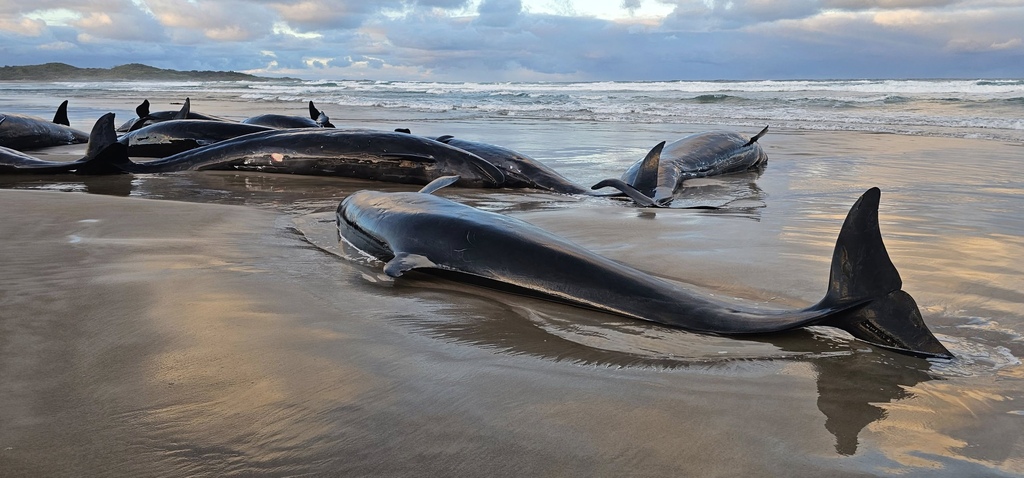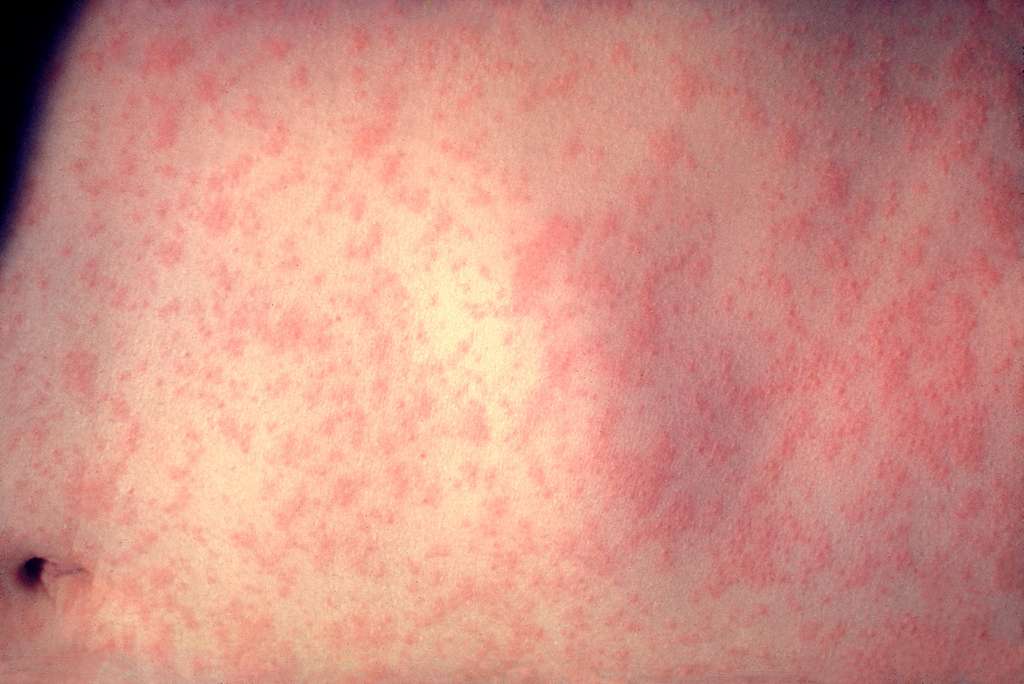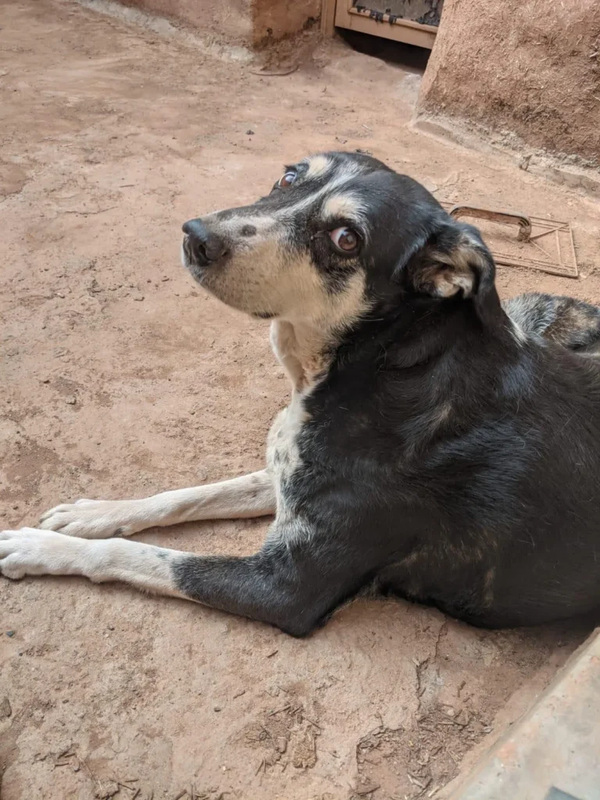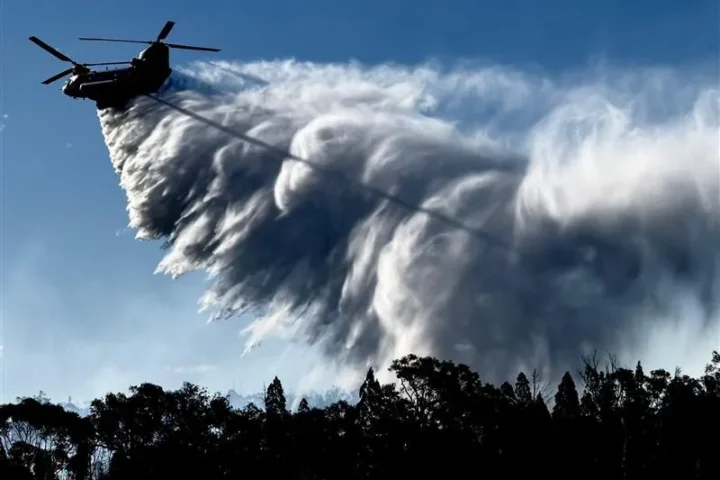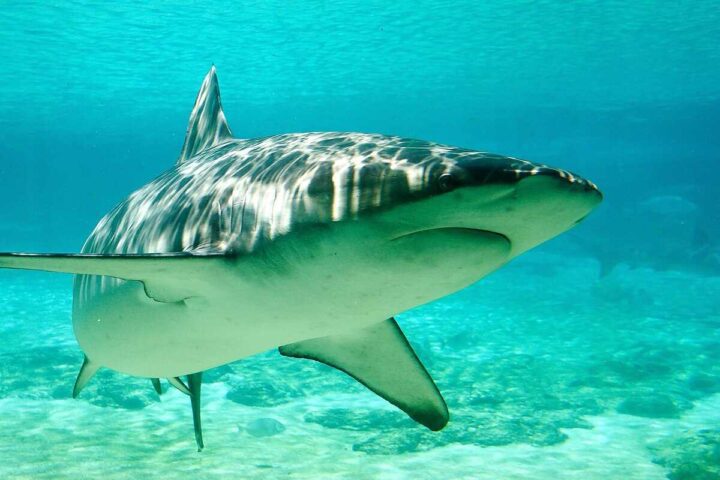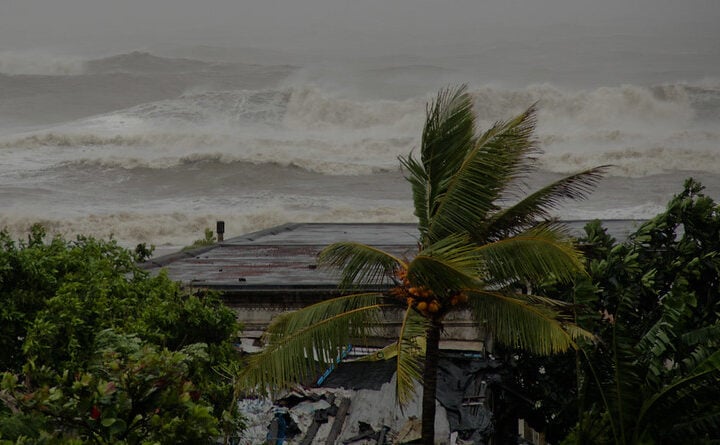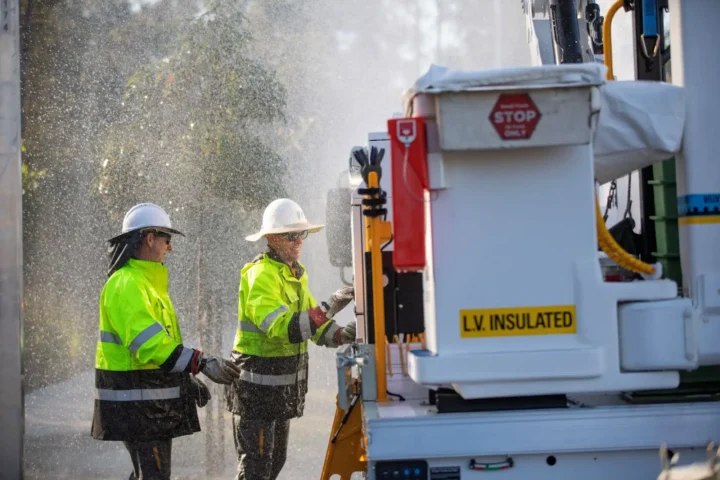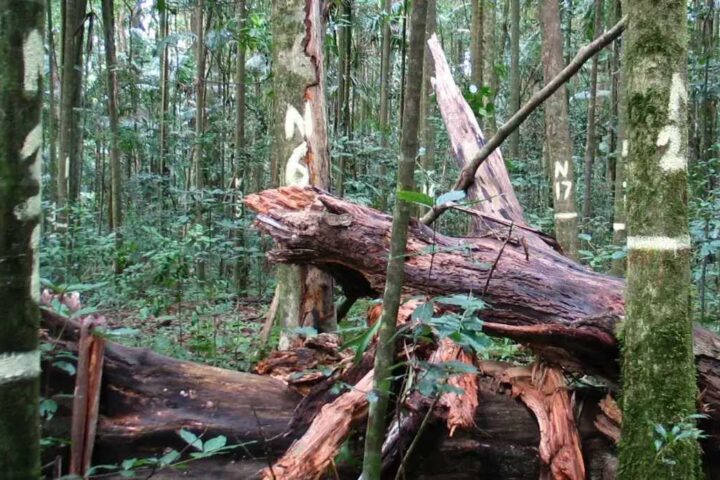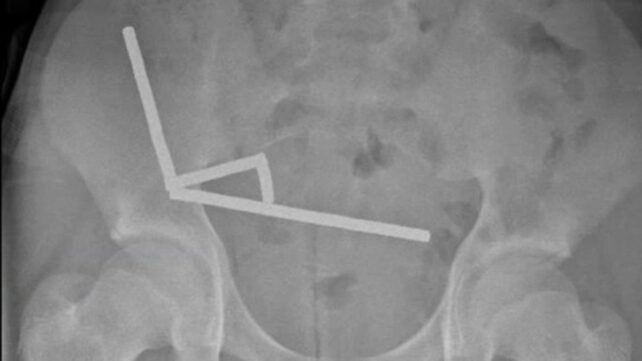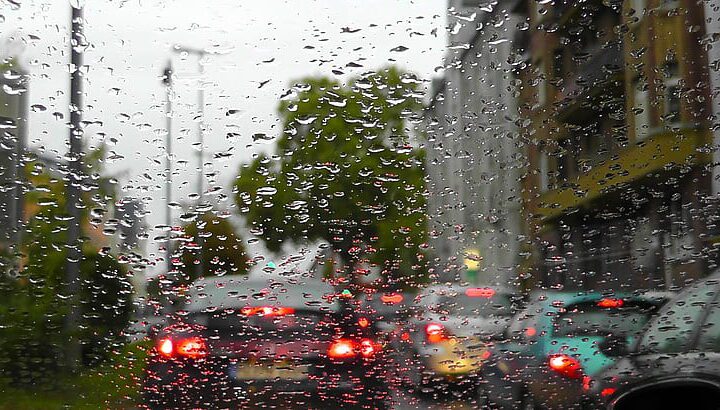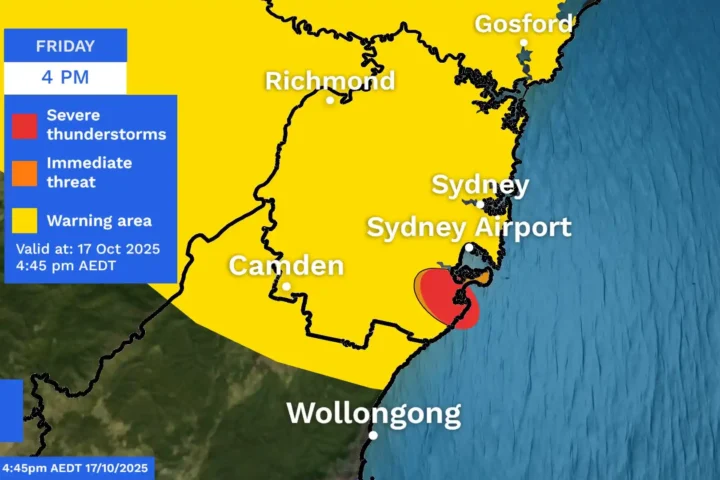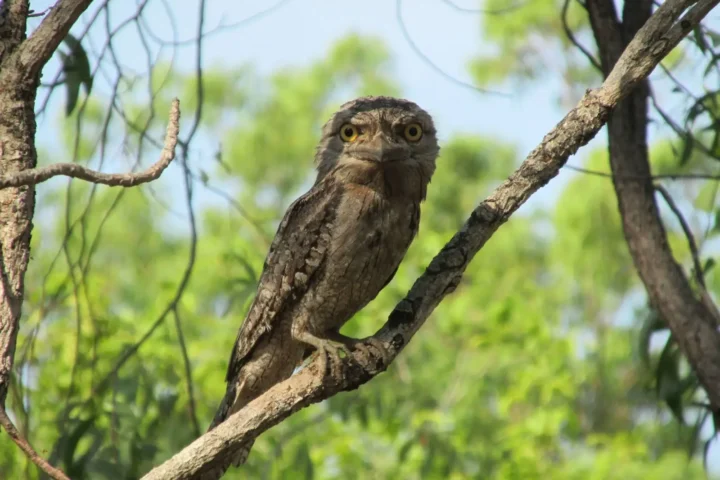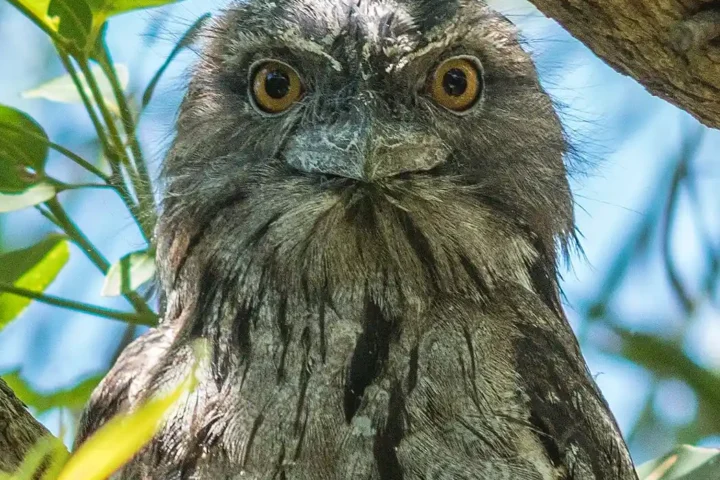A large group of whales is fighting for survival on a remote beach in northwest Tasmania. Local wildlife teams found 157 false killer whales – a type of large dolphin – stranded near Arthur River. About 90 are still alive.
“These animals have been here for between 24 to 48 hours,” says Brendon Clark from Tasmania Parks and Wildlife Service. This is the biggest stranding of this whale species in Tasmania since 1974.
False killer whales are social animals that swim in family groups. They can grow up to 6 meters in length and weigh between 500 kg to 3 tonnes. Being highly sociable, these animals often travel in close-knit communities which rely on constant communication, which can predispose them to mass strandings.
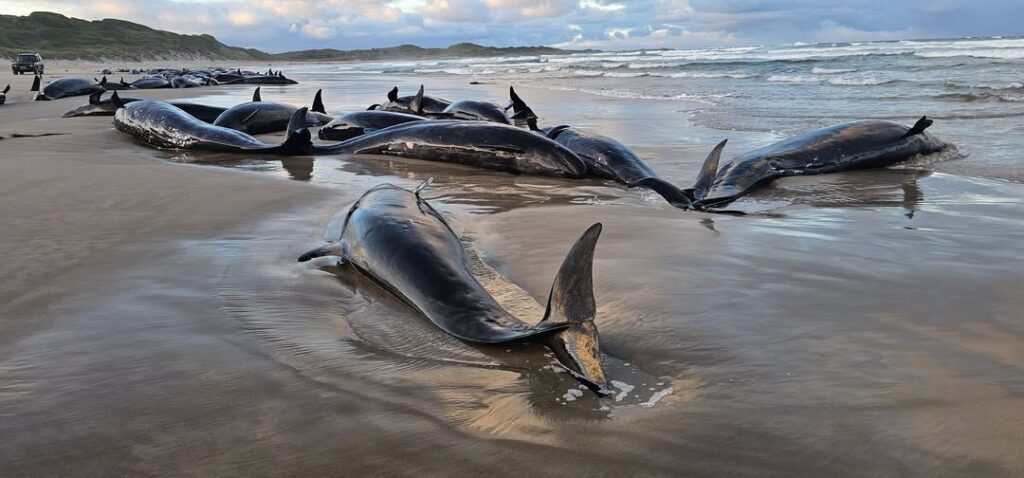
Local resident Jocelyn Flint found the whales after her son spotted them while fishing. “There are babies… Their eyes are open, they’re looking at me, like ‘help’,” she says, describing the heartbreaking scene.
The rescue is proving difficult. The beach is hard to reach, and strong waves make it dangerous to push the whales back into deeper water. “To try and refloat the animals directly back into that surf would be challenging,” Clark explains. An active bushfire nearby adds to these challenges.
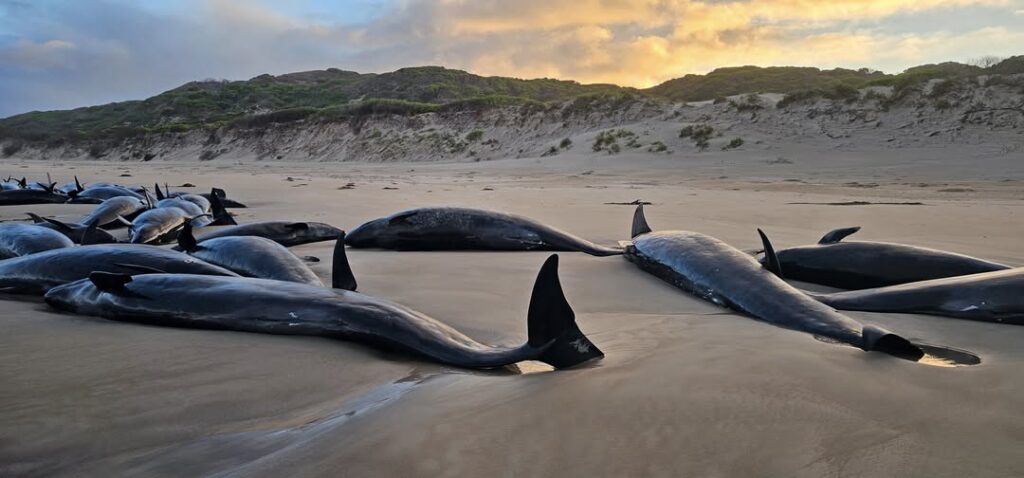
Wildlife experts and veterinarians are keeping the surviving whales comfortable while they figure out the best way to help them. They’re checking each whale to see which ones have the best chance of survival.
Tasmania’s west coast often sees whale strandings. In 2020, 470 pilot whales became stranded at Macquarie Harbour – Australia’s largest whale stranding ever. Another 200 whales stranded there in 2022.
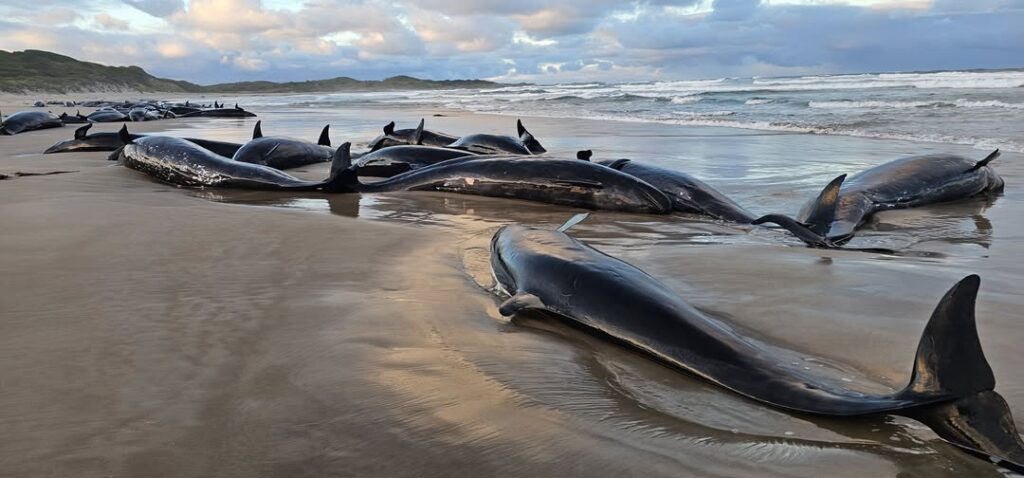
Moving the dead whales will be another challenge. The beach’s remote location and nearby Aboriginal cultural sites make it hard to bring in heavy equipment. “It may be a case of the carcasses remaining in situ and letting nature run its course,” Clark says.
Similar Posts
Scientists will study the dead whales to understand why they stranded. This research could help prevent future strandings, as Tasmania sees 80% of Australia’s whale strandings.
The Department of Natural Resources and Environment Tasmania states that all whales are protected species, even after death. They’ll ask for public help if needed, but for now, people should stay away from the area due to the bushfire and rescue operations.

This event shows how challenging it can be to help marine mammals in trouble, especially in remote areas. While rescue teams work to save as many whales as possible, they must balance the animals’ needs with the safety of rescue workers and respect for local cultural sites.
